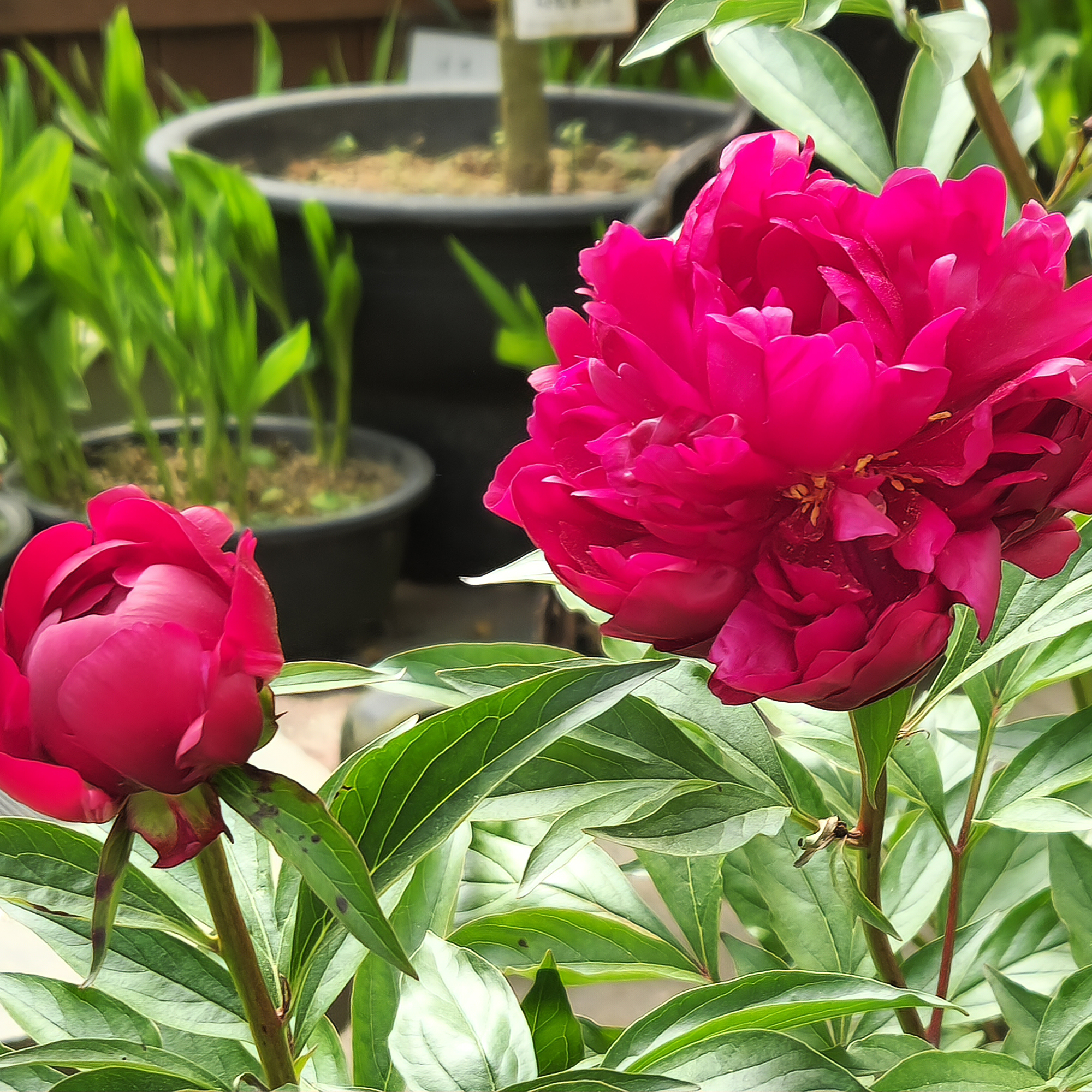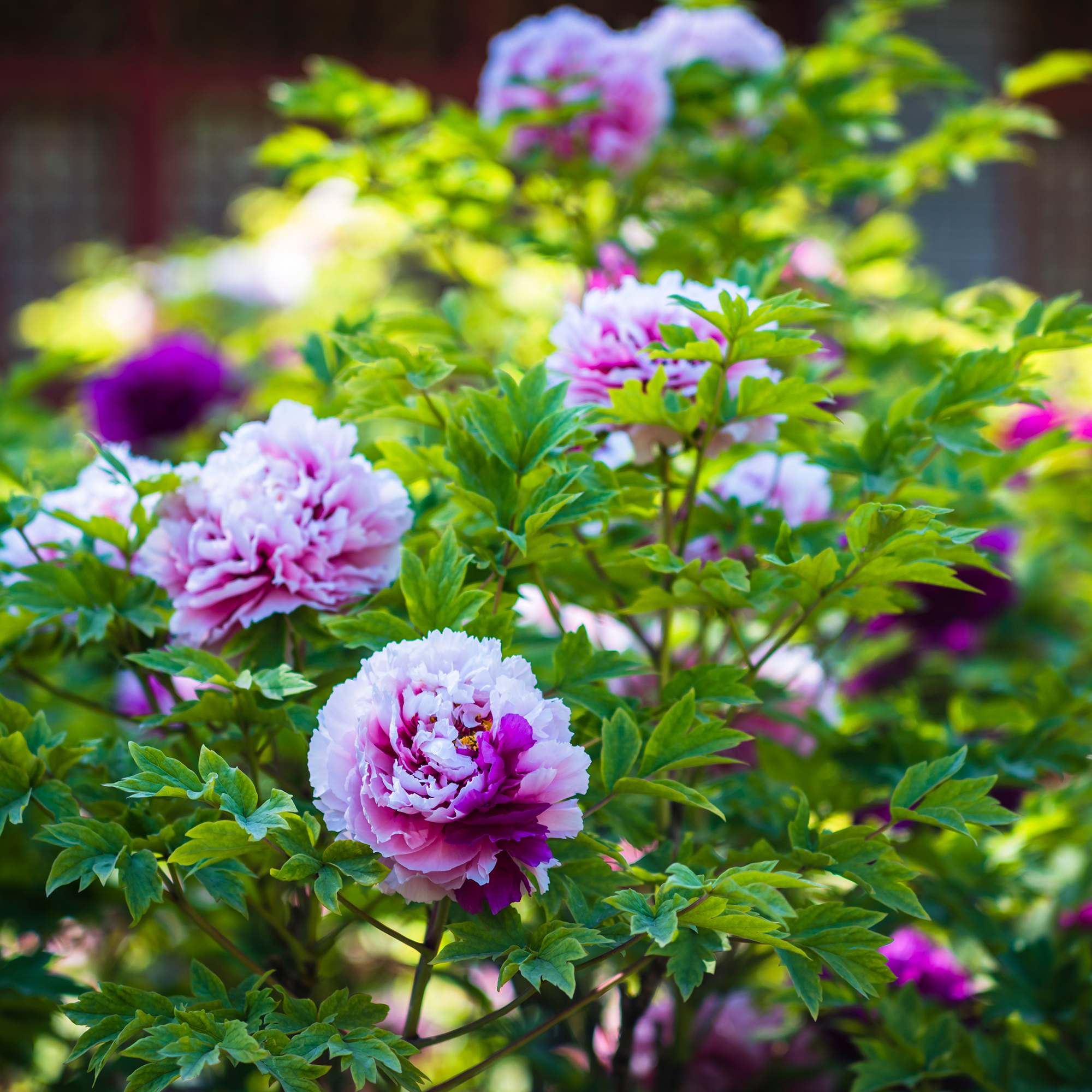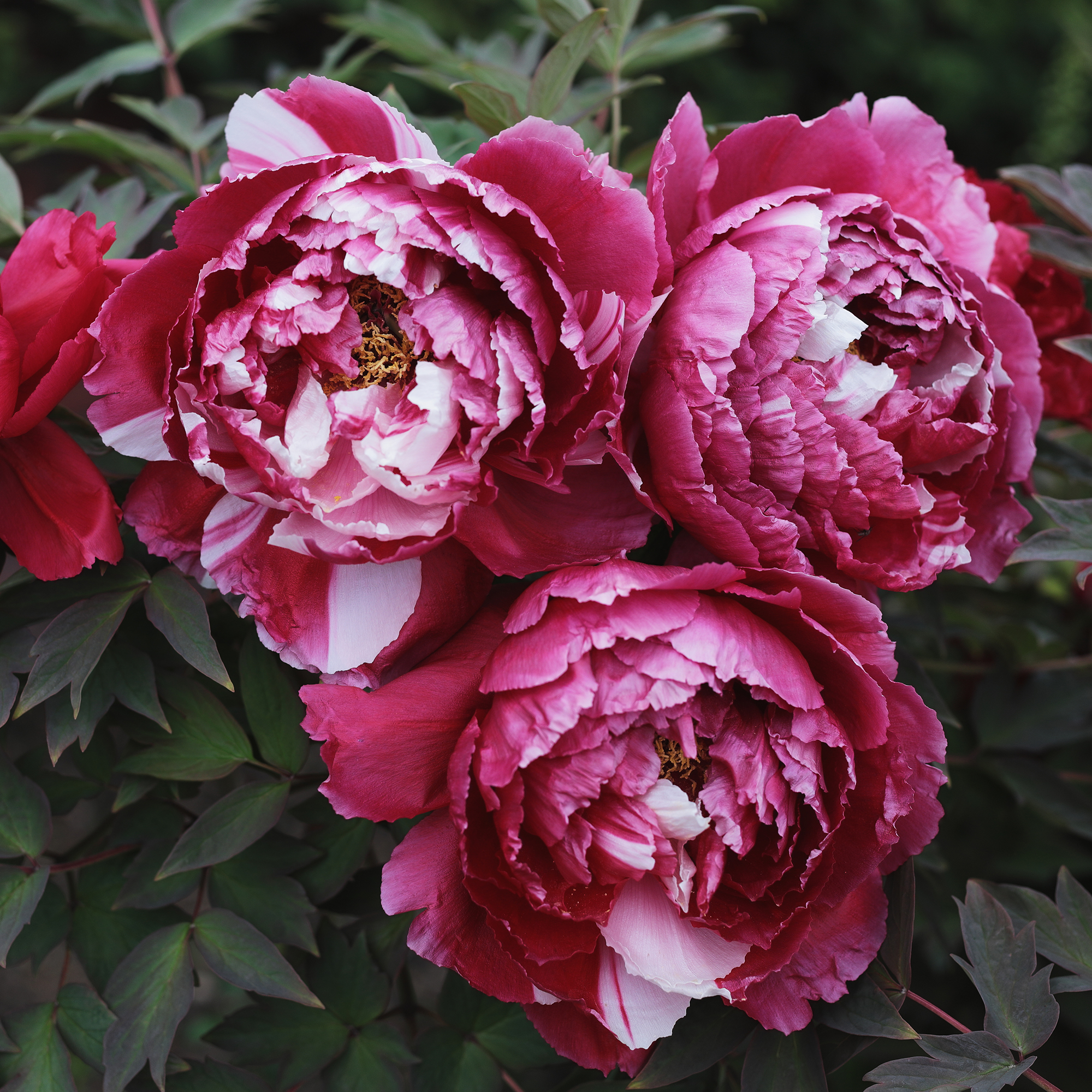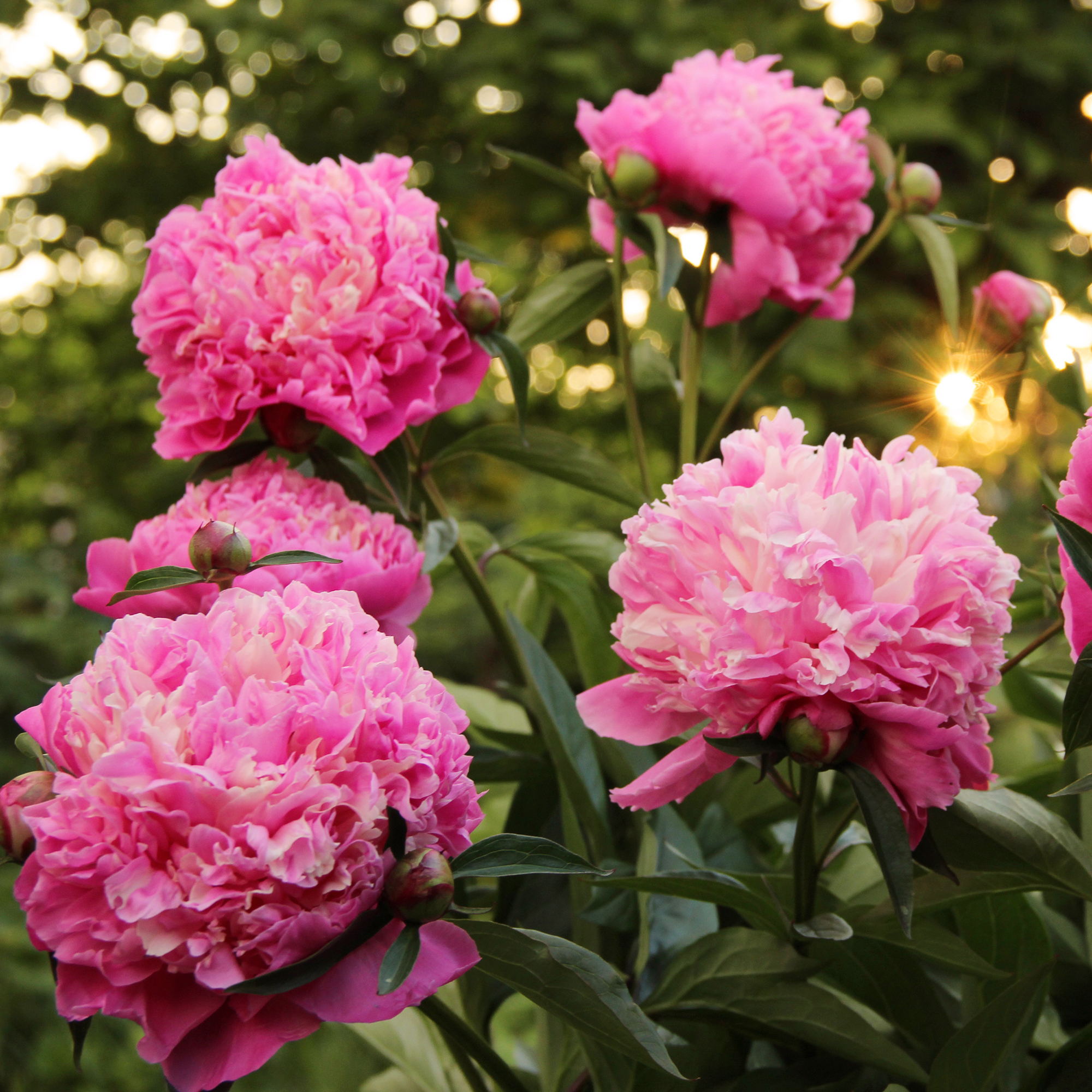How to plant peony bulbs and why autumn is the best time to get planting
Follow our step-by-step guide to grow your own beautiful blooms


EDITOR’S NOTE: An earlier version of this article included a quote from a purported expert whose credentials we have not been able to verify. The quote has been removed. We regret this lapse in our verification process and have updated our internal protocols to reduce the risk of recurrence.
Peonies are easily one of our favourite blooms. From pink and purple peonies to white, yellow and coral, we can’t get enough of them. But if you’ve found yourself buying bouquet after bouquet during peony season, it can quickly become quite an expensive habit.
So, if you’ve ever considered growing your own peonies or wondered how to plant bulbs, we spoke to the experts to find out everything you could possibly need to know about growing these beautiful blooms. Whether you’re a gardening enthusiast or this is the very first plant that you have thought about planting, we’ve got you covered.
And according to Steve Chilton, garden expert at LeisureBench, ‘peonies are generally considered easy to grow, which is one of the main reasons they're such a favourite amongst gardeners of all experience and skill-level.’
‘Once established, they require minimal maintenance and can continue to bloom for decades,’ agrees Josh Novell, director of Polhill. ‘However, it is essential to plant them correctly and be patient, as peonies can take a year or two to establish before producing their full, stunning blooms.’
Keep reading to find out exactly how to plant peony bulbs, along with some top tips from our experts that will have you counting down the days until they bloom.
How to plant peony bulbs

There are a few different types of peonies. ‘Each variety has its own unique characteristics, such as how the flower looks, the colour of the flower, the fragrance of the plant and how the plant grows,’ explains Steve.
Peonies are typically split into three different varieties; herbaceous peonies, tree peonies and intersectional peonies, which can also be referred to as Itoh peonies.
Sign up to our newsletter for style inspiration, real homes, project and garden advice and shopping know-how
Herbaceous peonies are ‘the most common type of peonies and are known for their stunning, large, and fragrant flowers,’ says Josh. They typically ‘die back to the ground in winter and re-emerge in spring.’
Tree peonies, on the other hand, are ‘woody shrubs that produce large, showy flowers in late spring to early summer,’ he continues. Because of their unique tree-like structure, they don’t die back in winter.
Finally there are intersectional or Itoh peonies. They ‘are a cross between herbaceous and tree peonies, combining the best traits of both,’ says Tim Marshall, head gardener at Raby Castle and Estate. Intersectional peonies produce some of the biggest flowers out of all three types and also have ‘a longer flowering period,’ remarks Chiung Chi Dunford, head kitchen gardener at Sculptures by the Lake. However, because of this, they are much more expensive to buy.
Regardless of which variety you opt for, there are some key steps to follow.
What you'll need
- Peony bulbs or tubers
- A spade or garden fork; this Masterpart Garden Border Digging Fork from Amazon is a great price
- Garden gloves; we like these Kew by Spear & Jackson Gardening Gloves from John Lewis & Partners that are available in two sizes
- Compost or well-rotted manure; try the Westland Ericaceous Compost from Amazon
- Balanced and slow-release organic fertiliser
- A garden trowel; pick up this Spear & Jackson Traditional Handtool Set from Argos
- A watering can or hose with a gentle spray nozzle; try this CrazyGadget Galvanised Metal Steel Watering Can from Amazon
- Mulch (straw, wood chips, or leaves)
- Stakes or peony rings - for taller peony varieties

How to plant peony bulbs: A step-by-step guide
1. Choose the right location
Peonies typically need at least six hours of direct sunlight each day, so where you place them in your garden is key.
‘Peonies also prefer to be sheltered from strong winds, so make sure that they won't be in the direct path of wind,’ explains Steve.
2. Prepare the soil
‘Before planting, loosen the soil and remove any weeds or grass with a rake,’ advises Steve. You’ll also want to ‘incorporate organic matter like compost or well-rotted manure into the soil to improve its fertility and drainage,’ adds Josh.
Then you’ll want to dig a hole to start planting your peony bulbs. As peonies have deep and expansive roots, it is important to leave enough space for them to grow. Steve suggests making the hole ‘around 2 feet deep and 2 feet wide,’ if you’re planting in the ground. The experts concur that having each peony plant be at least three feet apart is ideal.
If you plan on planting your peony bulbs in a container or pot, opt for a dwarf variety of peony instead, as they won’t need as much space to grow.

3. Plant the bulb
When choosing your peony bulb, you’ll want to double check that it is free of any signs of disease or damage. Then it’s time to plant.
Taking the peony bulb, you want to look for its buds, which are also known as eyes. When you go to plant, you’ll need to ensure that these buds are pointing upwards. They should be approximately 2 inches below the soil surface when you plant.
‘Fill up the hole with soil, ensuring the bulb is covered adequately,' says Steve. 'Avoid planting too deeply, as this may hinder growth and flowering.’
4. Fertilise and water
‘After planting, sprinkle a balanced, slow-release organic fertiliser around the base of the peony,’ suggests Josh. You’ll then want to ‘water thoroughly to settle the soil and encourage root establishment.’
‘Water regularly during the growing season but let the soil dry out slightly between waterings to ensure it doesn't damage the plant,’ says Steve. The soil should be moist but not waterlogged during the growing season.
While Josh advises that ‘deep watering once a week should suffice, depending on local rainfall.’ It’s more likely than not that we’ll have plenty of wet days during autumn and winter.
5. Mulch and provide support
‘Finally, you’ll need to apply a layer of mulch to help retain moisture and suppress those pesky weeds,’ according to Georgina O'Grady, managing director at Evergreen Direct.
You will, however, want to keep the mulch away from the base or crown of the plant.
And for those taller varieties of peonies, ‘consider providing support early in the season to prevent flopping,’ says Josh.
Stakes, peony rings or peony cages are all great options ‘if they begin to grow tall and to prevent large heads from weighing them down,’ says Sean Lade, gardening expert and founder of Easy Garden Irrigation.

FAQs
When should peony bulbs be planted?
According to the experts, the best time to plant peonies is typically in the autumn, between late September and late October.
Essentially you want to give yourself enough time ‘before the ground starts to freeze,’ Jack Sutcliffe, co-founder of Power Sheds, comments.
‘Planting in autumn means your plants have more time to settle in and establish while the ground is still warm, while the root is still fresh and has not been stored for too long,’ Chiung explains.
Should peony bulbs be soaked before planting?
‘Peony bulbs do not need to be soaked before planting, and it is generally not recommended to soak them,’ explains Josh. ‘Unlike some other types of bulbs, such as daffodils or tulips, peony roots (often referred to as tubers or rhizomes) are best planted without soaking, as that can potentially cause them to rot or develop fungal diseases.’
‘Peony bulbs have a natural dormancy period that helps them survive harsh weather conditions, and soaking the bulbs before planting can actually cause them to absorb too much moisture,’ according to Steve.
The only time that the experts would recommend soaking them before planting ‘is if the bulbs seem particularly dry,’ Steve reveals. ‘If this is the case, then soaking them for about 12-24 hours before planting helps to fully rehydrate the bulbs, ensuring they have enough moisture to develop healthy roots.’
And ‘you should always make sure that the bulbs are dry before planting, so even if you soak them, you need to wait until they aren't soaking wet,’ Steve concludes.
‘It is important to note that peony tubers should not be soaked for an extended period of time, or in hot water, as this can damage the tubers,’ Tim adds.

Do peonies grow better in pots or the ground?
This all depends on your personal circumstances. For example, if you have a sprawling garden with plenty of space to get planting, planting your peony bulbs in the ground would be the best option. But if you are short on outdoor space or only have a balcony or a small patio, you will be limited to growing your peonies in a pot or container.
‘While peonies can be grown in pots, it may require more care and attention to provide suitable growing conditions,’ says Tim. If you’re looking for a step-by-step guide on how to grow peonies in pots, look no further.
‘Peonies tend to grow better in the ground rather than in pots,’ Tim affirms. ‘In the ground, they have access to a larger volume of soil, allowing their roots to spread out and establish more easily. Additionally, peonies need a cold period during winter to bloom successfully, and planting them in the ground provides better insulation for their roots during this period.’
Because of their deep roots, ‘growing them in pots can actually limit their growth and potentially lead to poor flowering,’ warns Steve. But you will know which option is best for you and what outdoor space you have available to you.
So get going and get ready to enjoy these gloriously flouncy flowers come springtime.

Ellis Cochrane has been a Freelance Contributor for Ideal Home since 2023. Ellis has been writing about homes, interiors and gardens for four years now, with her also contributing to House Beautiful, Country Living, Expert Reviews, Real Homes and Stylist.